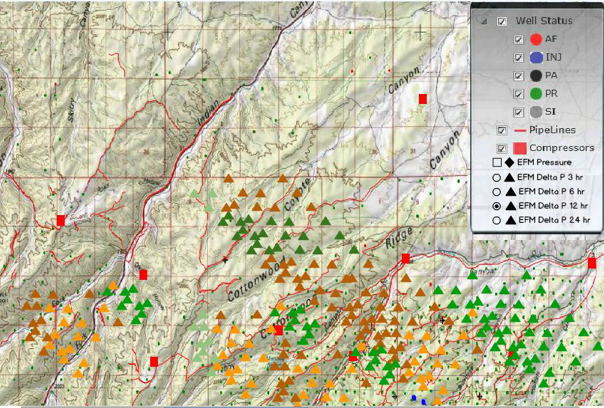Monitoring & Surveillance Workflows with EICEbox
Extend traditional SCADA-based surveillance with real-time model-driven monitoring
EICEbox for Field-Wide Operations Surveillance
Visualize relevant well & equipment data context
- Graphical - plots, charts & tables
- Geographical - map view (GIS)
Group wells based on operational focus
- by Facilities (common separation)
- by Reservoir (common pool)
- by Route (common operator)
- Field (all wells)
Sort & filter assets based on operational priority
- by Well Type – production/injection/shut-in/abandoned
- by Artificial Lift method employed
- by Production - rate / water cut / GOR / history / ownership
- by Priority - current alarm notification(s) and history
Integrate disparate data source in one common context
- SCADA / DCS - surface/down-hole, equipment, tank, injection
- Production History – oil, gas, water, injection, GOR, water cut
- Engineering (static) – equipment/tank performance
- Synthetic - model-based (calculated)
Aggregate Production
- by Operating Period - daily, 7-day, 30-day, lifetime
- by Production & Volume - oil, gas, water, GOR, water cut
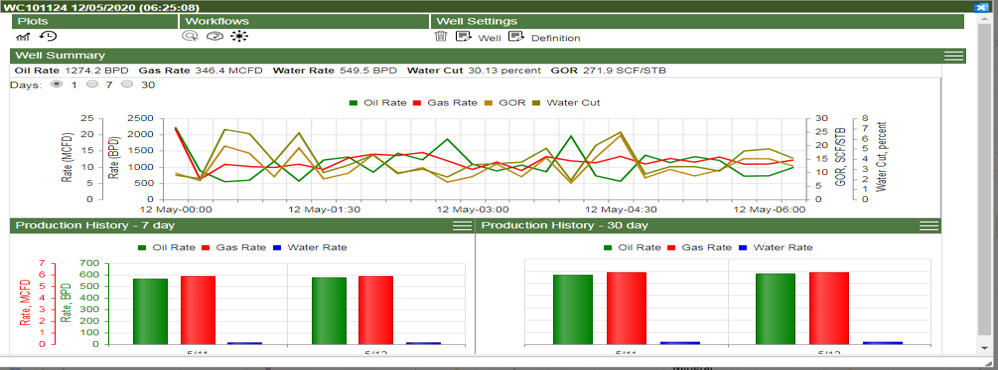
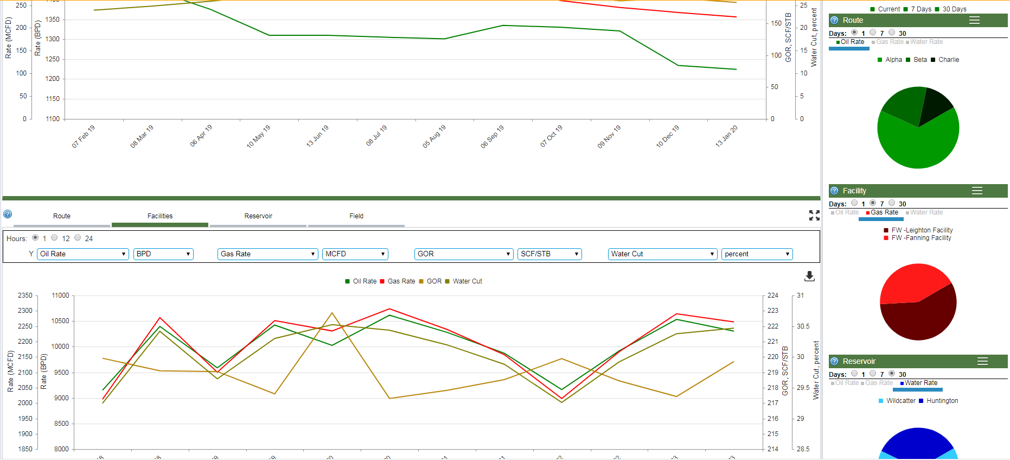
Hydrate Monitoring
Real-time pipeline profile prediction for monitoring potential for hydrate formation and managing MEG inhibitor injection
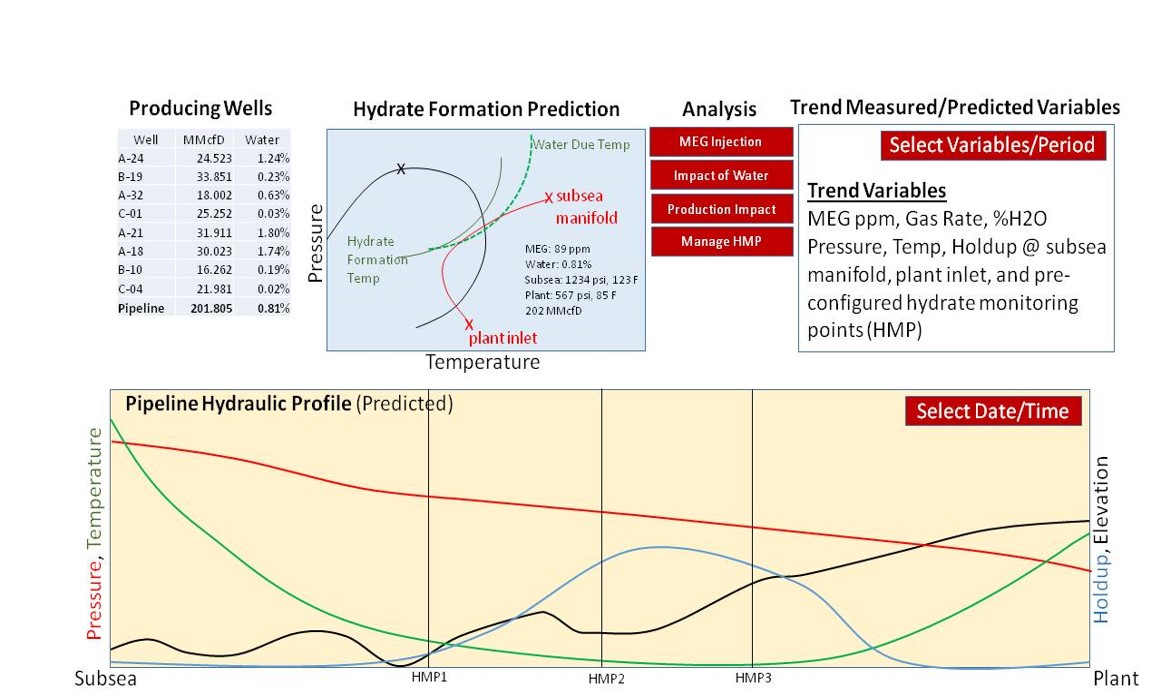
Corrosion Monitoring
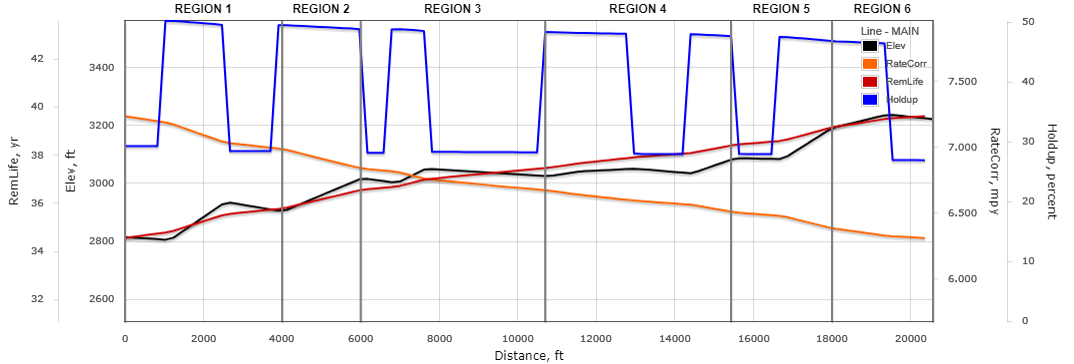
- Identify vulnerable sections of the pipeline with rigorous multiphase hydraulics integrated with corrosion analysis
- Use the ICDA methodology to segment pipe based on elevation profile, flow rate, fluid, contaminants, and physical pipe conditions
- Monitor corrosion rates and remaining life for corrosion-susceptible sections of the pipeline
ESP Performance Monitoring
Algorithm Outline*
(executed every timestep)
- Estimate Production Rate
- Compute Flowing Bottom-Hole Pressure from Inflow Model
- Compute Pump Inlet Pressure (PIP)from an iterative forward marching algorithm
- Compare measured vs. calculated PIP; adjust production rate and iterate (steps 2-4) until convergence
- Estimate Gas-Oil Ratio (GOR)
- Calculate multiphase hydraulic profile in wellbore (segment-wise iterative reverse march) starting from measured Tubing Head Pressure
- Determine Total Dynamic Head (TDH)
- Calculate pump operating parameters from TDH
- Compare calculated pump intake pressure against measured; adjust GOR and iterate (steps 6-9) until convergence
- Calculate Motor and Cable parameters
*actual implementation approach will vary based on quality/frequency of measurements
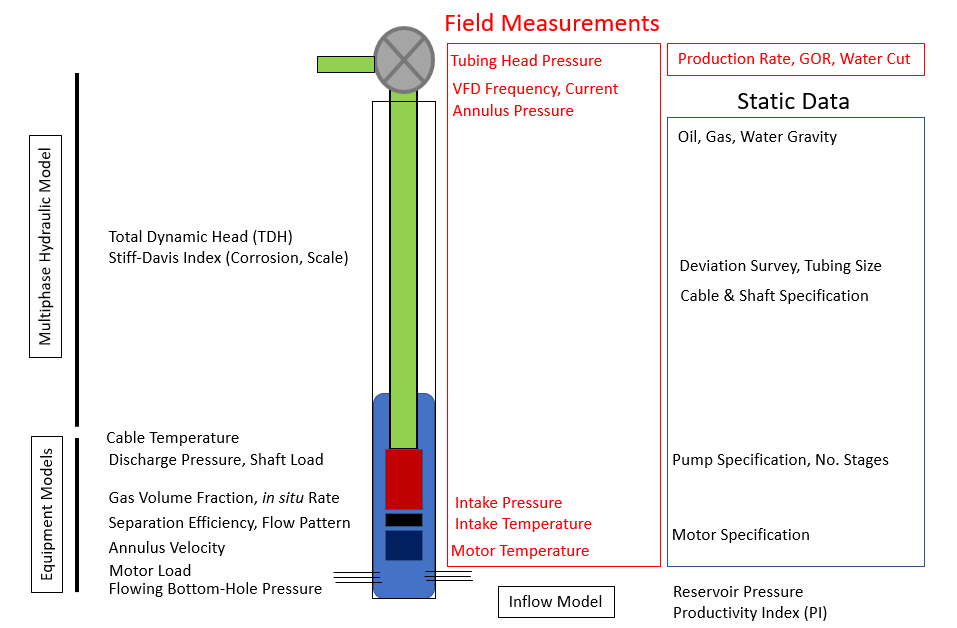
Pressure Profile Monitoring
Leveraging pressure profile to track movement of flowline freezing front in winter conditions
